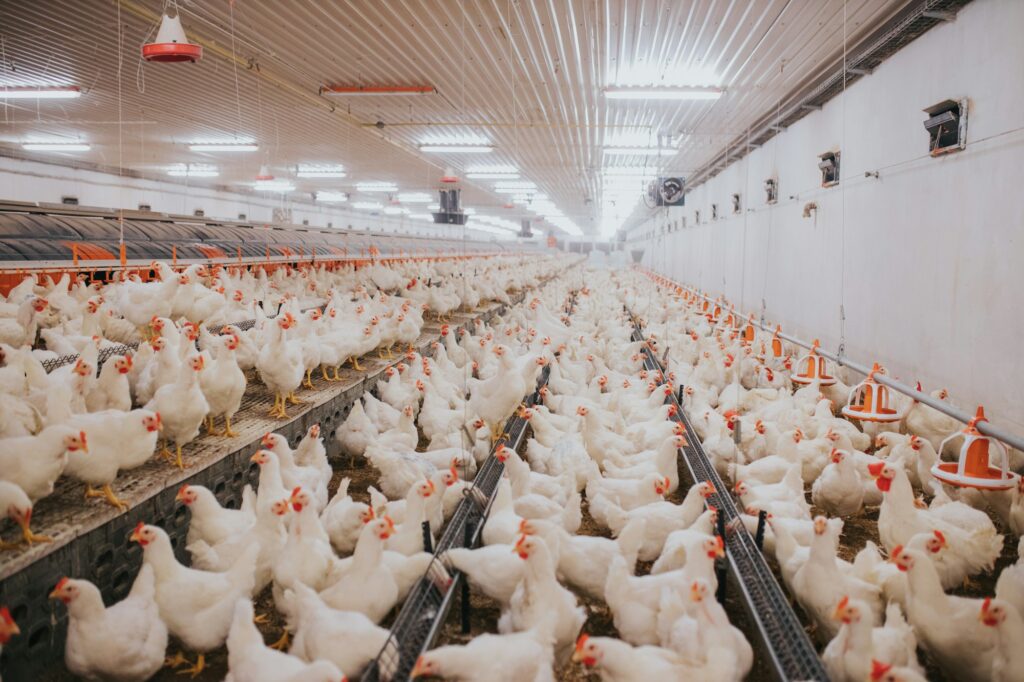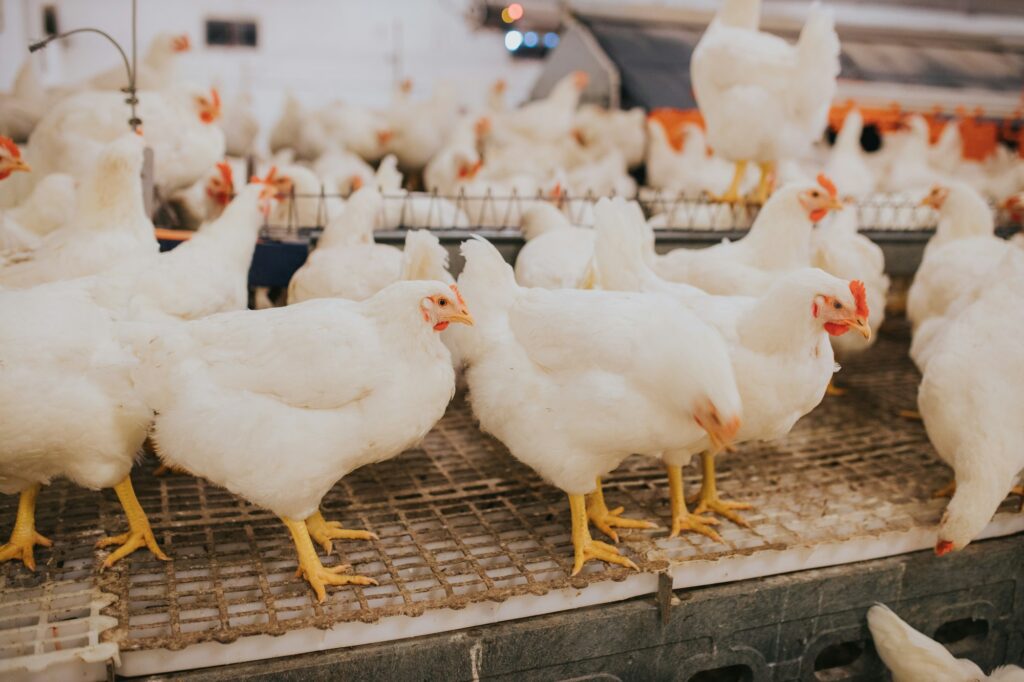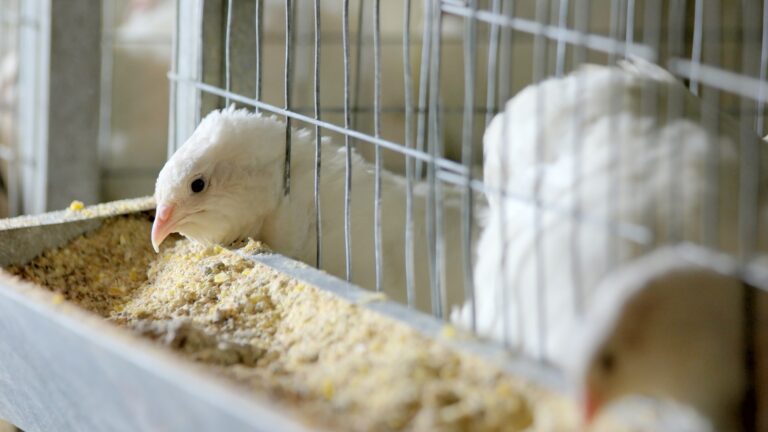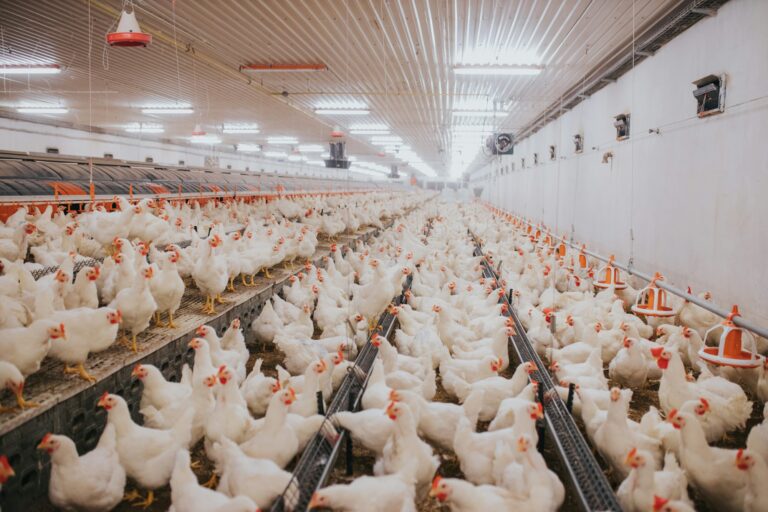
Selective focus shot of indoors chicken farm, chicken feeding
Understanding what contributes to the non-hatching of chicks is instrumental in maintaining a healthy and productive poultry flock.
As experts in the field, we appreciate the value of being on top of new technologies and research, and that’s why we’re thrilled to introduce you to LaserLife®.
- 1 Introducing LaserLife®
- 2 LaserLife®: a closer look at its operation
- 3 The features of LaserLife® equipment
- 4 The import of LaserLife® in hatcheries
- 5 Other products in the LaserLife® range
- 6 The impact of LaserLife® on hatchability rates and chick health: a review of scientific studies
- 7 Using LaserLife® for corrective measures: the importance of breakout analysis
- 8 Ensuring optimal nutrition of hatchlings: the role of the yolk sac
Introducing LaserLife®
The advent of LaserLife® has been a game-changer in the hatching industry. Its unique method of identifying non-viable eggs before incubation significantly improves biosecurity protocols in hatcheries.
Utilizing dual sensor analysis, this cutting-edge technology has the ability to categorize each egg as live, dead, contaminated, or clear. This level of detailed identification is pivotal in removing non-viable eggs, ensuring that only the healthiest and most viable eggs proceed to the incubation phase.
LaserLife®: a closer look at its operation
LaserLife® works by meticulously analyzing each egg. It uses laser technology to study the refraction patterns on the eggshell, which helps in identifying the nature of the unfertilized eggs. Further, through heat emission analysis coupled with an infra-red scan, it can identify fertile eggs.
The technology’s dual sensor analysis gives it an edge over traditional methods, enabling it to categorize each egg accurately. This not only amplifies success in the hatching process but also bolsters biosecurity in hatcheries through the timely identification and removal of non-viable eggs.
The features of LaserLife® equipment
The LaserLife® equipment is designed with features that maximize efficiency and effectiveness. It can handle a high volume of eggs, reaching up to 100,000 eggs per hour. This feature makes it suitable for large-scale hatcheries looking to maximize hatchability rates.
Additionally, the equipment is versatile and adaptable to different crate sizes. This flexibility makes it a practical solution for hatcheries of different scales. Complementing its speed and adaptability is its data collection system, which aids in the continuous monitoring and analysis of egg viability, providing valuable insights to improve hatchability rates.
The import of LaserLife® in hatcheries
In a hatchery, failure to detect and remove contaminated eggs can lead to a multitude of problems. Bacterial contamination and incidence of explosive eggs can increase late embryo mortality, reduce hatchability, and result in poor chick quality.
By implementing LaserLife® technology, hatcheries have a better shot at improving hatchability and chick health. It allows for effective detection and removal of dead embryos and rotten eggs, leading to chicks with a lower bacteriological challenge at hatch. This, in turn, results in a better chick quality index and improved chick health status.
In fact, detection and removal of contaminated eggs can improve hatchability by between 0.5 and 1%. This level of improvement can have a significant impact on the overall productivity and profitability of a hatchery.
Other products in the LaserLife® range
Beyond the revolutionary LaserLife® technology, there are other products in the range designed to automate and optimize hatchery operations.
The Chick Counter, for example, accurately counts the number of chicks in a batch, while the Tray Unloader automates the process of unloading trays, reducing manual labor and increasing efficiency.
The impact of LaserLife® on hatchability rates and chick health: a review of scientific studies
Research has shown that LaserLife® technology has a significant impact on hatchability rates and chick health. Various studies, available on academic databases such as Google Scholar and PubMed Google, have elucidated the transformative effect of LaserLife® on hatcheries.
A study published in Poult Sci revealed that LaserLife® technology has the potential to improve hatchability by between 0.5 and 1%. This seemingly small percentage increase can, in fact, have a considerable impact on a hatchery’s productivity and profitability.
The study also revealed that chicks hatched from LaserLife® processed eggs had a lower bacteriological challenge at hatch, which is a critical factor in determining chick health status post-hatch.
Further research conducted on the breeder flock demonstrated the long-term effects of using LaserLife®. The results showed a boost in the overall health and productivity of the flock. This is likely because non-viable eggs, which can be a source of disease spread, are effectively identified and removed before they can pose a threat.
These studies can be accessed and reviewed in a separate window to provide a more comprehensive understanding of LaserLife®’s effectiveness.
Using LaserLife® for corrective measures: the importance of breakout analysis
The breakout analysis is a method used to examine eggs that have failed to hatch, assessing the causes of embryo mortality. It is conducted at around 21 days of incubation, following the general hatching time for most hatching eggs. The analysis helps identify issues such as insufficient egg weight, poor air cell development, and excessive weight loss during incubation.

By utilizing LaserLife®, hatcheries can gain a more accurate breakout analysis. The technology’s ability to categorize each egg as live, dead, contaminated, or clear allows for a detailed understanding of the causes of non-hatching, facilitating more effective corrective measures.
For instance, if LaserLife® identifies a large number of dead eggs, it could indicate a problem with the health of the breeder flock or the incubation conditions. Similarly, a high number of contaminated eggs could signify a biosecurity issue. Therefore, LaserLife® not only improves hatchability rates and chick health but also helps in identifying and rectifying problems within the hatcheries.
Ensuring optimal nutrition of hatchlings: the role of the yolk sac
LaserLife® technology also plays a role in ensuring the optimal nutrition of hatchlings. A chicken’s yolk sac is effectively its first meal, supplying the chick with essential nutrients during the first few days after hatching.
By identifying and discarding non-viable eggs at an early stage, LaserLife® ensures that only the healthiest and most viable eggs proceed to the incubation phase. This significantly enhances the probability of the chicks hatching with a fully absorbed yolk sac, which is crucial for their initial growth and development.
The integration of LaserLife® into hatcheries is instrumental in enhancing hatchability rates and improving chick health. By accurately identifying and removing non-viable eggs before incubation, LaserLife® minimizes the risk of disease spread and improves overall productivity.
The technology also aids in breakout analysis, facilitating effective corrective measures, and ensuring optimal hatchling nutrition.
For a more detailed understanding of LaserLife® and its extensive range of products, professionals can visit our website or reach out to us directly. Embrace the future of efficient and successful hatching with LaserLife®.




